
It’s finally here. Clockwork Aquario, the lost arcade game from the creator of Wonder Boy III: Monster Lair. Dormant for a whopping Guinness Record-setting 30 years, Strictly Limited Games and ININ Games have finally graced us with the release of this long-lost arcade game from Westone. But what are we really getting? What is Clockwork Aquario?
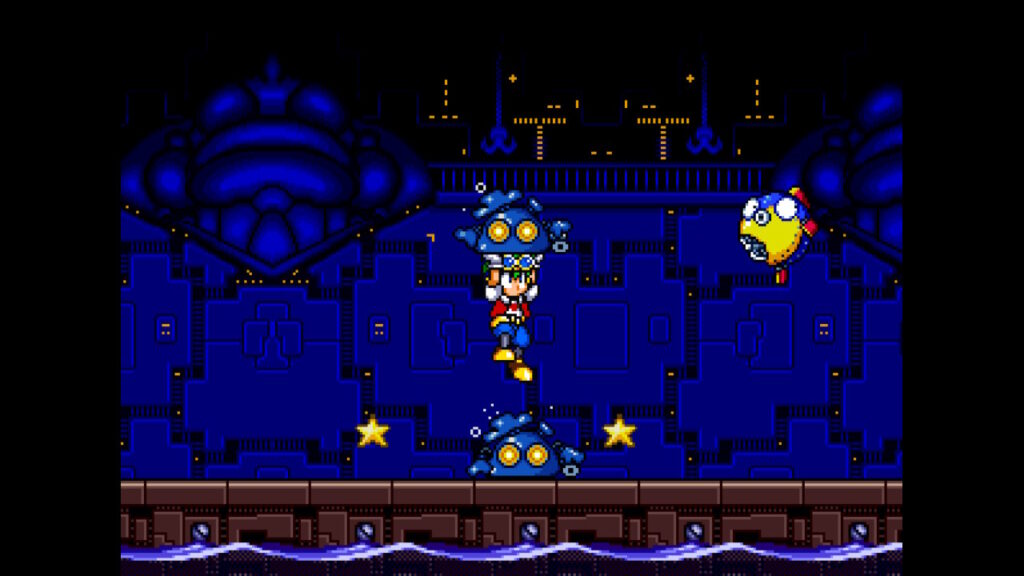
What you’re in for here is a pure arcade experience. Clockwork Aquario features your choice of three protagonists, male, female, and robot, each with their own gameplay differences. Huck is the standard character, Elle can jump incredibly high, and Gash the robot is tougher than the rest and loses parts when it takes a hit. Together, their goal is to stop Dr. Hangyo from taking over the world. How? Apparently with cute robots. There’s really not much plot here, and Clockwork Aquario was noticeably designed as a quarter muncher.
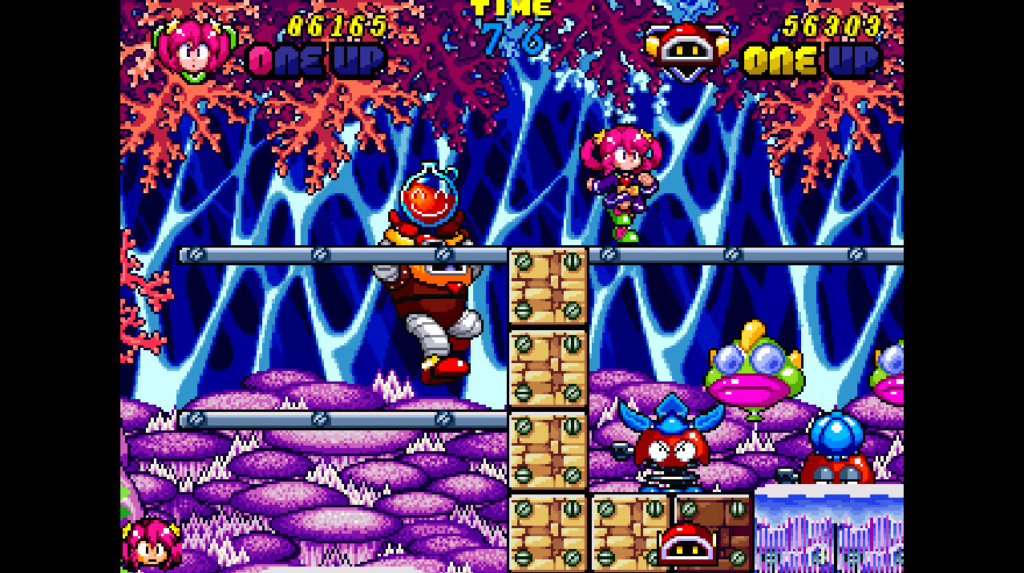
Once you start the game, you’ll find that the gameplay is similar to other ‘90s platformers. You can stomp on enemies, jump up at them from underneath, or hit enemies with a punch. Regardless of the method of contact, the first hit stuns standard enemies and the second destroys them. If you want, you can instead pick them up and throw them at other enemies to destroy them and create score multipliers. Score enough points and you’ll get an extra life, shown by the progress bar in the top left of the screen. Grab a star when one drops and you’re invincible for a short time, blasting star stuff from your fingertips to obliterate anything onscreen. That’s really all there is to the gameplay in Clockwork Aquario. This is a very simple, straightforward game with very few frills.
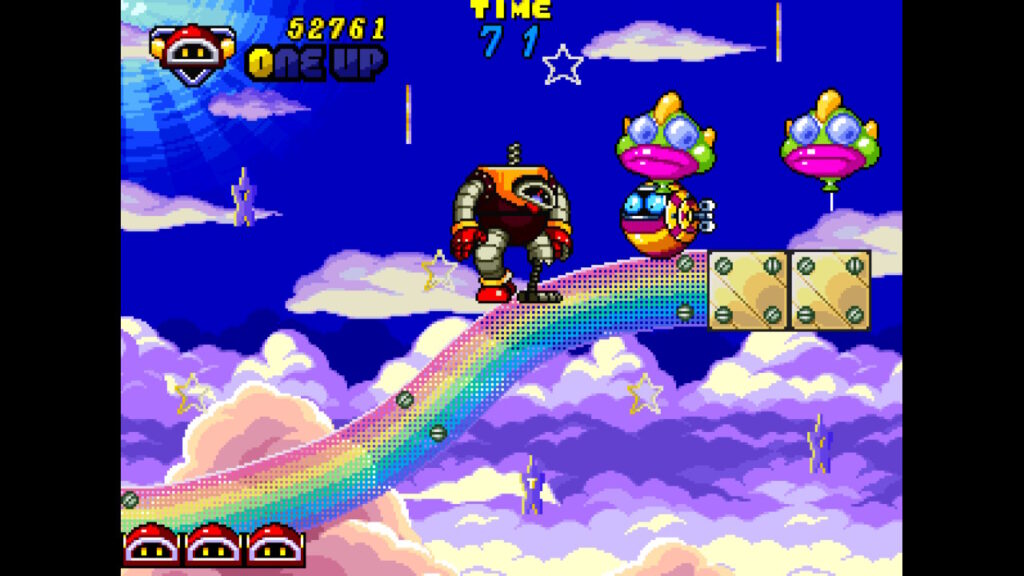
In fact, when you get right down to it, there’s not much here at all. Clockwork Aquario is only five levels long and those levels are surprisingly short. Each one has some sort of mini-boss partway through, but none of them are hard and some can be defeated almost instantly. The same goes for the bosses. While they’re huge and look intimidating, most of them have remarkably simple patterns and can easily be spammed to death, sometimes in a matter of seconds before they even get a chance to attack. It’s a pretty pathetic showing for such unique-looking enemies. Then entirety of the game can be finished in about 20 minutes as long as you get the knack for the controls.
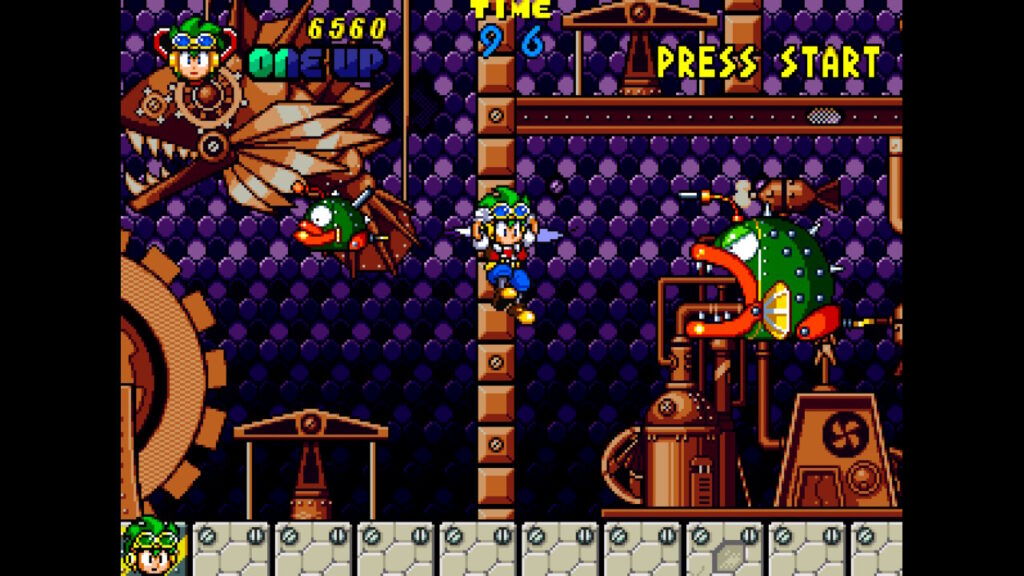
Unfortunately, the controls for Clockwork Aquario are not the greatest either. The physics of the game are decent but nothing special, often flinging your character in a parabolic arc directly into enemies. There are key areas in each level designed to grind down your credits as well, more arcade design in action and extremely noticeable in such a short game. The collision detection is a bit fast and loose as well, making it difficult to dodge some enemies and attacks unless you’re really paying close attention. While hitting stuff from below and jumping onto enemies and throwing them might remind players of a Super Mario game in the short term, the elegance of design in the Mario series is sorely lacking in Clockwork Aquario, leaving you instead with a slog through the same levels over and over until you learn each pattern and get to the end of this rather short title.
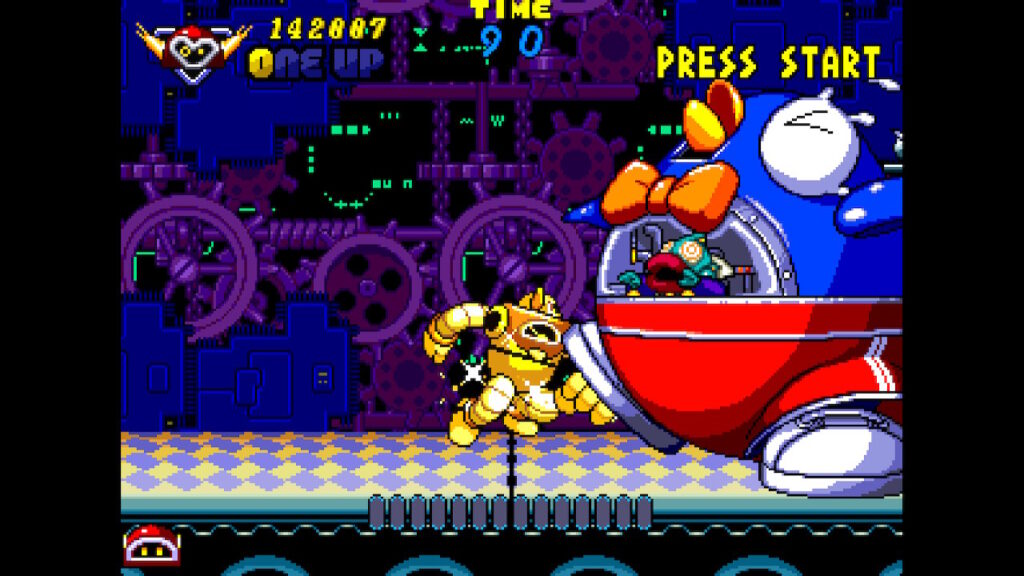
Since the whole game can be beaten quickly, SLG and ININ decided to lock the credit controls behind a skill wall to prolong the game’s length and make you feel like you got your money’s worth here. On Easy mode, you get nine credits to make it to the end of the game, likely the quickest route for most people. Once you complete the game on any difficulty excluding training mode (which is entirely unnecessary as the game is so short and simple), you’ll unlock the arcade mode, allowing you to credit feed to your heart’s content and tweak settings. Sadly, this is a weak reward because you’ve already seen everything Clockwork Aquario has to offer by that point and unless you want to feed through hard or become a world champion, there’s little extra value offered here. On the upside, the game is also two-player and you can even toss each other about if you want. There’s also a mini-game, but it’s exclusive to two-players, further limiting some gamers. Finally, the game offers you a small art gallery of design images, which is also kind of neat, and a sound test mode if you really dig the tunes.
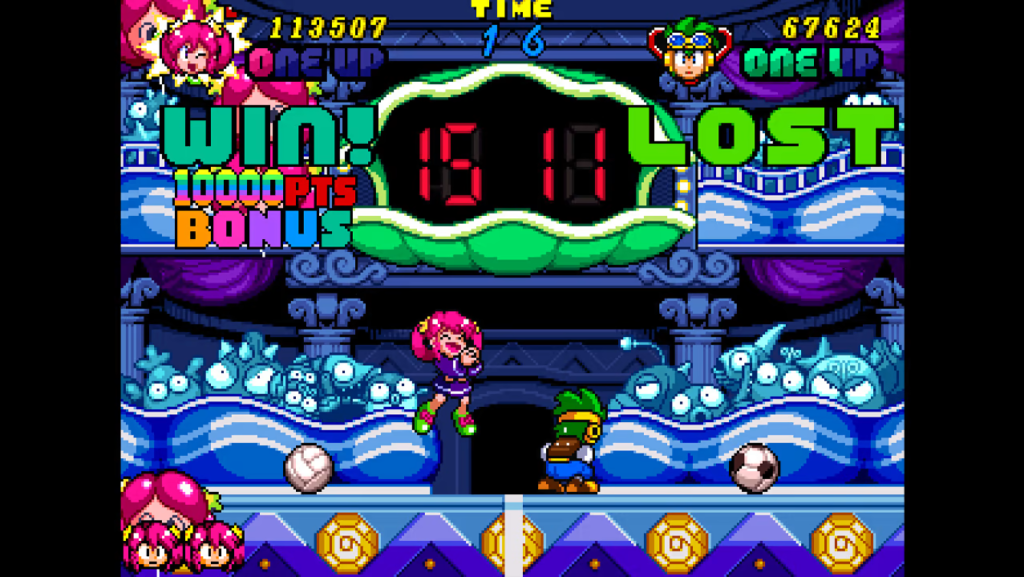
Visually, Clockwork Aquario is a gorgeous, sleek artifact of the ‘90s. The colorful, huge sprites that Westone is known for are in full effect here with multi-segmented bosses, wild enemies, crazy colorful backgrounds, and a design scheme so saccharine that you’ll be hard pressed to need sweets for a week. In short, it’s bizarre and cool-looking and it’s hard not to love the excellent, expressive sprites in Clockwork Aquario. The accompanying soundtrack on the other hand is a dated relic of a bygone era, with earworm themes that play on a loop in an attempt to drive the player mad while struggling through this candy-colored wonderland. But what you’re here for is mainly the visuals and a bit of reminiscence for the arcade era.
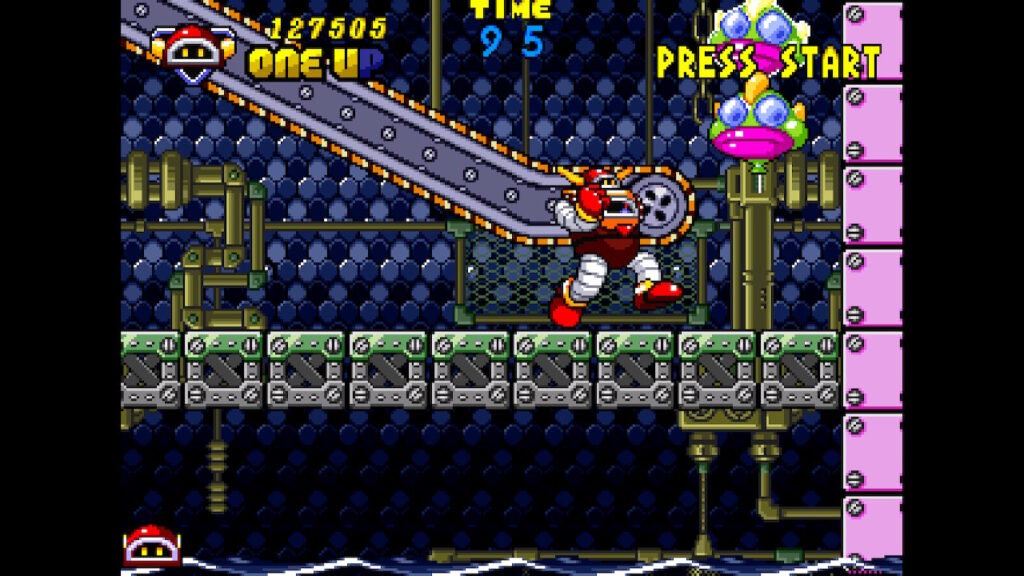
Sadly, that’s not something you’ll get with Clockwork Aquario. Lush, wonderful graphics are accompanied by everything that made the ‘90s arcades die out, and it’s not a huge surprise that Aquario didn’t test well back then. You can shine a turd all you want but it’s still a turd. There’s a reason the game wasn’t released and it isn’t because it looks cool. We tend to glorify the end of the arcade era these days in game media, on Twitter, on Twich and YouTube, but the truth is no one was buying what these companies were selling anymore and they stopped selling. The transition to home gaming was almost complete by the time Clockwork Aquario was being shopped around and a game that short on a home console would have left consumers furious. Rightly so too, since other games like Capcom’s CPS2 line were significantly longer and more intricate experiences for the same quarter.
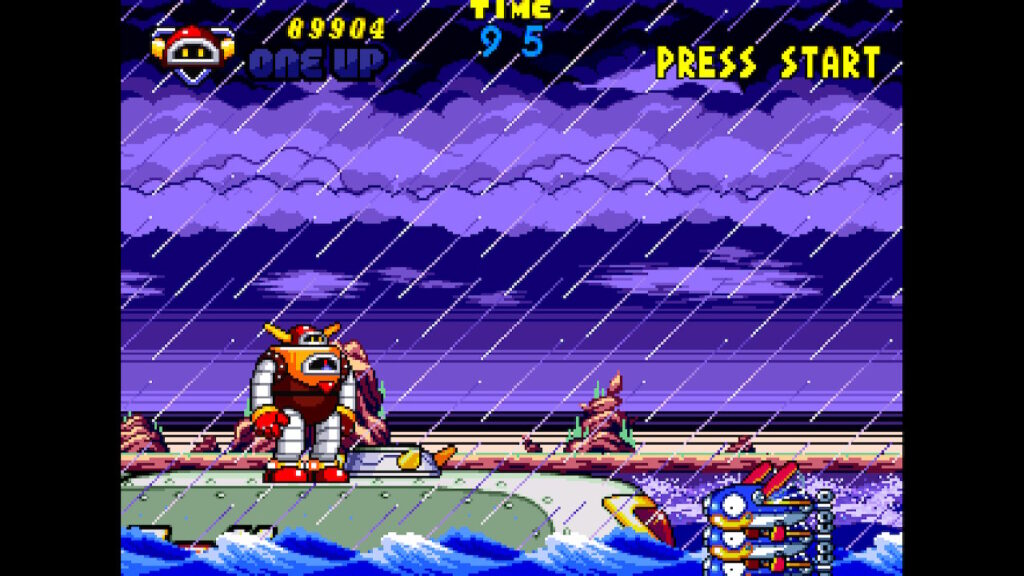
At a $20 price point, you’re basically buying some nostalgia with Clockwork Aquario. Is it pretty? Sure. Is it an unreleased arcade game? Sure. Is it a polished gem of an experience? Absolutely not. It’s an abandoned project that was dumped due to poor response based on gameplay at the time and it hasn’t aged all that well. Sure it’s neat to see and all, but when you have to lock the continues behind a completion wall just to extend gameplay, you really don’t have much going on under the hood. The simple fact is that this should have been a $5-10 game that was restored for the novelty as a short experience. Clockwork Aquario is an odd relic of the decline of the arcade era and chances are high that it’s not going to wind its way into the hearts and minds of gamers as a classic. If arcade games are your bag and you just want to see the pretty sprites, cool, but be aware of what you’re getting into and expect to be underwhelmed.
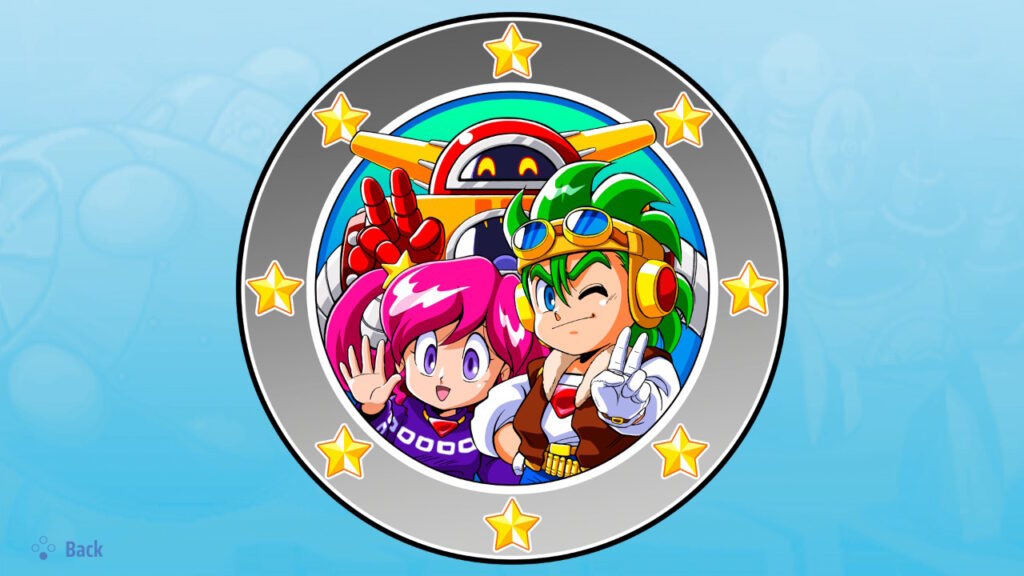
This review is based on a digital copy of Clockwork Aquario provided by the publisher. It was played on a Nintendo Switch in both docked and undocked modes and played equally well in both. Clockwork Aquario is also available for Playstation 4.

